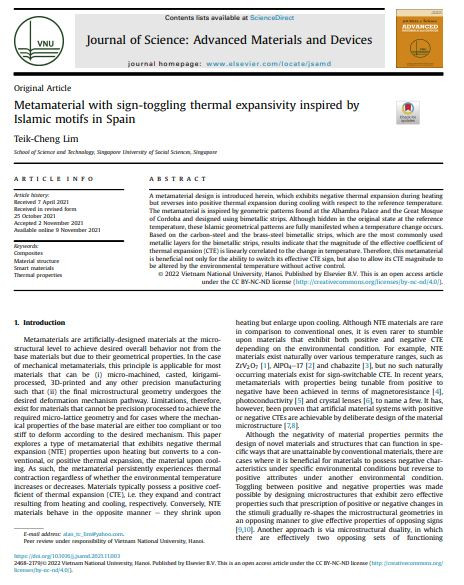
A metamaterial design is introduced herein, which exhibits negative thermal expansion during heating but reverses into positive thermal expansion during cooling with respect to the reference temperature. The metamaterial is inspired by geometric patterns found at the Alhambra Palace and the Great Mosque of Cordoba and designed using bimetallic strips. Although hidden in the original state at the reference temperature, these Islamic geometrical patterns are fully manifested when a temperature change occurs. Based on the carbon-steel and the brass-steel bimetallic strips, which are the most commonly used metallic layers for the bimetallic strips, results indicate that the magnitude of the effective coefficient of thermal expansion (CTE) is linearly correlated to the change in temperature. Therefore, this metamaterial is beneficial not only for the ability to switch its effective CTE sign, but also to allow its CTE magnitude to be altered by the environmental temperature without active control.
I agree to the terms outlined below:
You agree to upload and assign Mosqpedia Database the rights to use the content worldwide and in perpetuity across all current and future media platforms. Mosqpedia Database may edit, copy, adapt and translate your contribution.
The content will be distributed under the Creative Commons Attribution-Deed – Attribution-NonCommercial-NoDerivatives 4.0 International – Creative Commons
All data will be stored in line with data protection regulations.